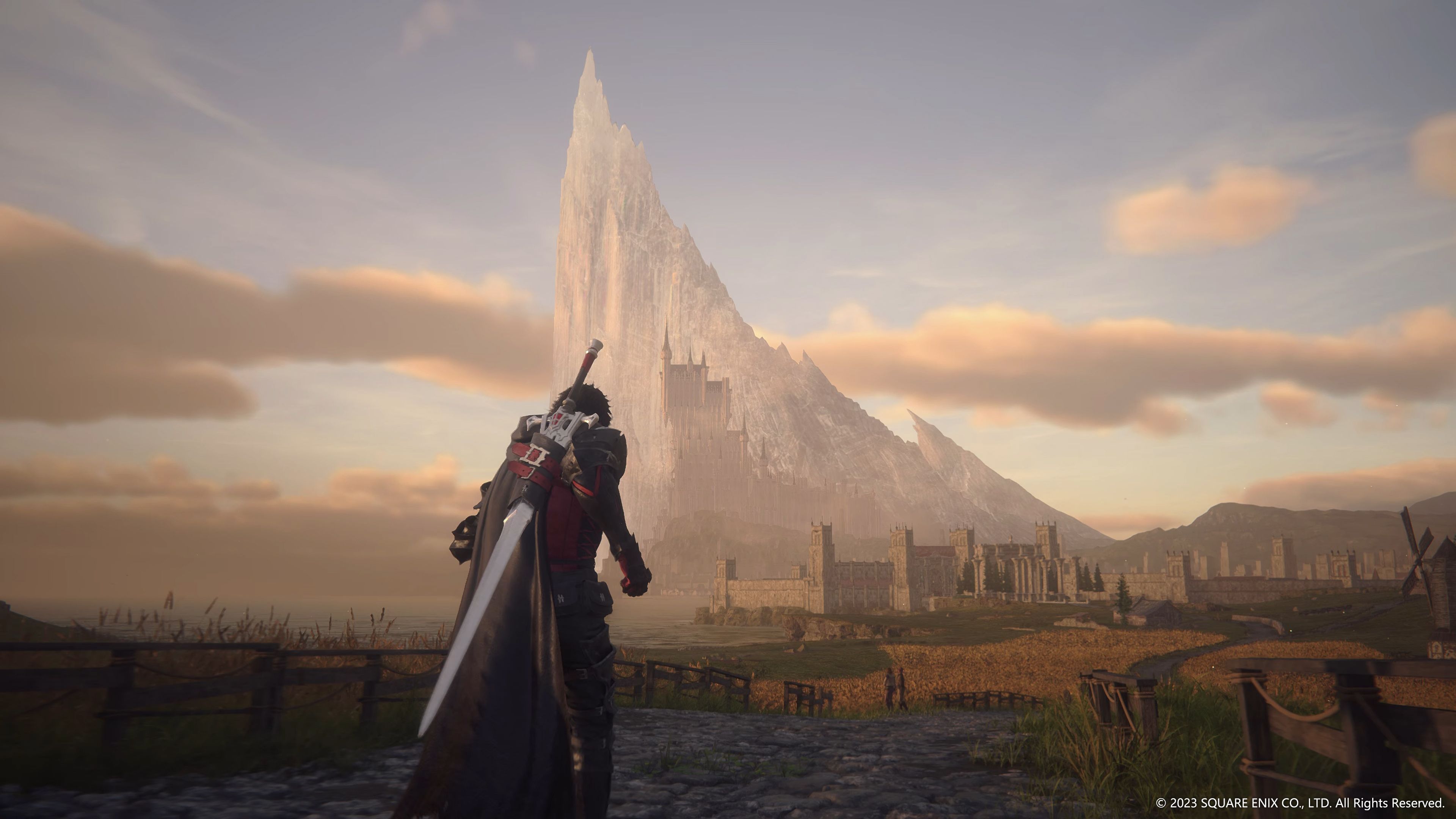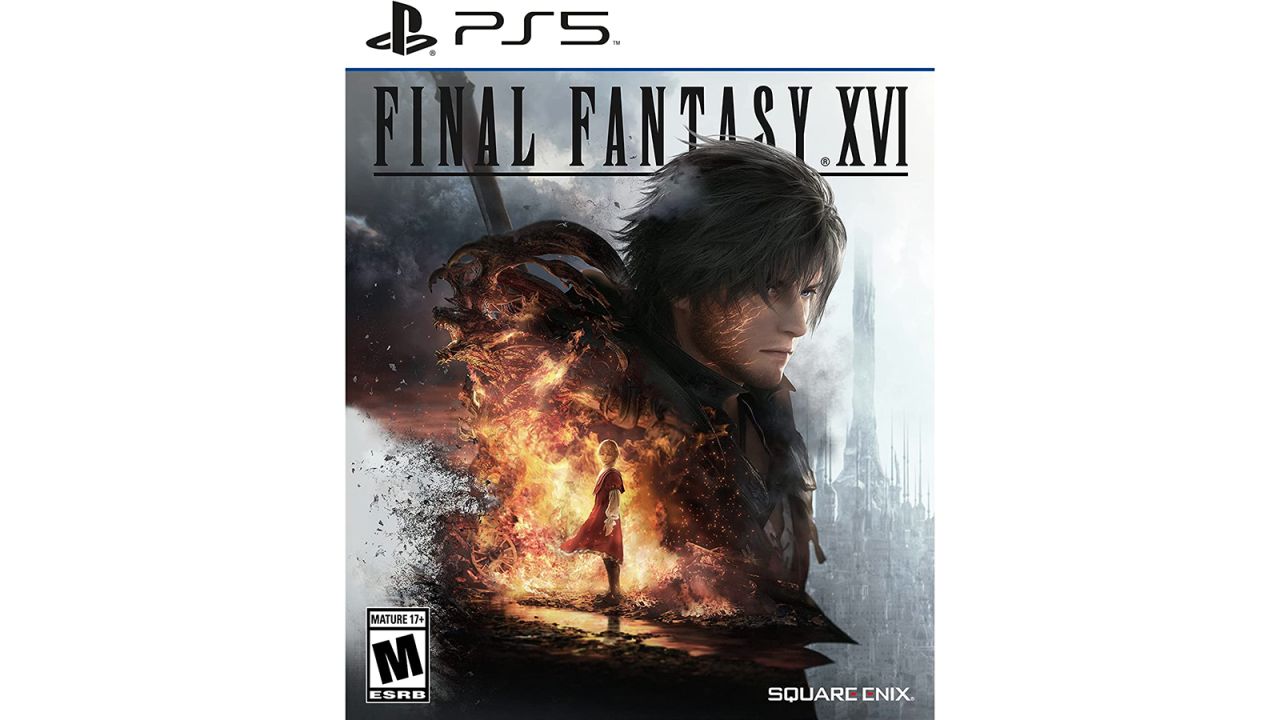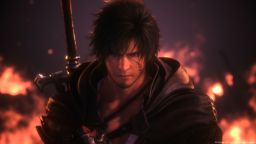From the vibrant metropolis of Zanarkand in Final Fantasy X to the savage wilderness of Pulse in Final Fantasy XIII, each mainline Final Fantasy game feels distinct from one another yet always familiar. They share similar gameplay and magic systems, and each one introduced many different kinds of characters, ranging from humans to beasts. The franchise’s most recent mainline entry, 2016’s Final Fantasy XV, gave us a group of four main characters dressed in all black in a car, reminiscent of a touring boy band.
Final Fantasy XVI is the newest upcoming entry in the long-running series and its setting is going back to a medieval, more “Game of Thrones”-type flavor. It feels more grounded in its fantasy tropes than the past few games that attempted to mix magical elements with more modern settings.
After spending about six hours with Final Fantasy XVI across three separate demos — which were made specifically for this media experience and may differ from the final game — the early story has me intrigued, as the main cast’s character dynamics are fascinating. The combat and gameplay are frenetic bursts of action and cinematography that’ll keep you engaged until the next story beat. Final Fantasy XVI could be the next big medieval-style role-playing game that fans have been craving when it lands on PS5 on June 22.
Final Fantasy XVI takes Square Enix's beloved role-playing series to a fresh medieval setting, complete with dynamic, accessible action combat and a new approach to storytelling.
Harnessing the Phoenix

My time with the demo started with me controlling Clive Rosfield, the main character of the game. Practicing with his mentor, lord commander Murdoch, this is where players get introduced to the basics of Final Fantasy XVI’s real-time combat.
Clive can attack, parry and dodge attacks during battle as well as utilize his Phoenix powers to gain an extra edge. With those powers, he can unleash a powerful flaming sword attack to inflict a great amount of damage on his enemies. The battle system also allows Clive to break enemies’ stances, which is a separate bar under their health bar. It’s similar to the stamina bar in Sekiro: Shadows Die Twice. Causing enough damage will cause the enemy to double over helplessly and take even more damage while they recover.
Using Clive’s Phoenix powers is a quick and easy way to break their stamina quickly, as it usually only takes about one to two hits from his flaming sword after using regular attacks. But it’s a viable choice to reserve Clive’s most powerful attacks for when the stamina bar breaks to cause massive damage. That’s because Clive’s powers have a cooldown timer after use and by the time he’s able to use them again, the enemy will have already recovered. It’s an interesting trade-off whether to save or use Clive’s abilities.
I also appreciated the generous window of opportunity that Clive has when he dodges or parries incoming attacks. When he dodges at the last moment or parries, Clive enters a slowdown period where he can attack the enemy — something that’ll be familiar to anyone who’s played the Bayonetta series. The mechanic felt forgiving, especially for those who aren’t attuned to action games. I wasn’t overly concerned about getting my timing exactly right, just close enough.
There are two different difficulty modes: Normal and Story. The former provides the standard difficulty, while Story mode makes enemies weaker so players don’t have to worry about getting stuck in hard battles. Additionally, the mode also provides Clive with some equippable items that make the mechanics even easier, such as an auto-dodge accessory.
Taking cues from others
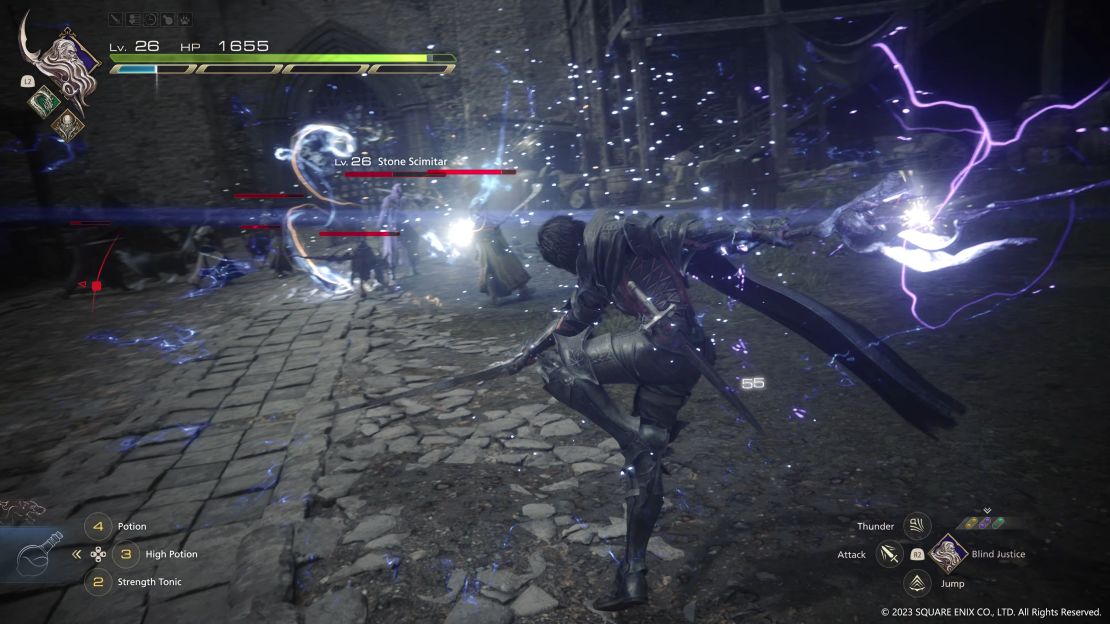
Later on, Clive gets teammates to help him out during battle. His comrades act similarly to how Atreus does in God of War (2018) and God of War Ragnarok. They act autonomously, but Clive can issue certain basic commands to them like to attack enemies or heal himself. These party members were also valuable distractions in case I needed to put some distance between Clive and a boss and heal up. Furthermore, they can’t get knocked out during battle, as they don’t have health bars, so I was able to recuperate myself for as long as I needed to.
After getting a boss’s health down a certain amount, cutscenes will play and Clive will enter cinematic moments with them, often trading blows and dodging attacks. This then transitions into a quick-time event (QTE) where players need to either press or continuously mash a face button on the PS5 controller to pass it. Fortunately, these QTEs are very forgiving and give you plenty of time to react. In different scenarios, these QTEs wipe off even more health points from the boss or inflict the finishing blow, marking a glorious end to your intense battle.
Another aspect of the gameplay is the Eikon battles, which are where two gigantic magical beasts fight each other. They’re similar to those kaiju-style showdowns found in Bayonetta 3. While slower-paced than regular battles, they make up with grandiose spectacles. They have dedicated controls and mechanics.
In two separate battles, I controlled both Phoenix and Ifreet as they faced off against different enemies. The one where I was Phoenix felt like an on-rails shooter minigame, shooting fireballs with a reticle, while the one where I was Ifreet felt like a fighting game that had me trying to close in on my opponent. Both were a nice change of pace from the boss battles and were the icing on the cake for an already cinematic game.
Square Enix also confirmed with me that Clive will unlock new powers over the course of the story. In a second demo, I played a particular build where Clive had both Titan and Garuda’s powers. Clive can switch between the different Eikons on the fly. These additional powers provide more variety to the minute-to-minute gameplay. Whereas Garuda’s wind powers can pull enemies in, Titan’s earth powers help shield incoming attacks. Hopefully, the pace at which these additional powers unlock in the final game will come steadily so combat doesn’t end up feeling stale for long periods of time.
A dysfunctional family
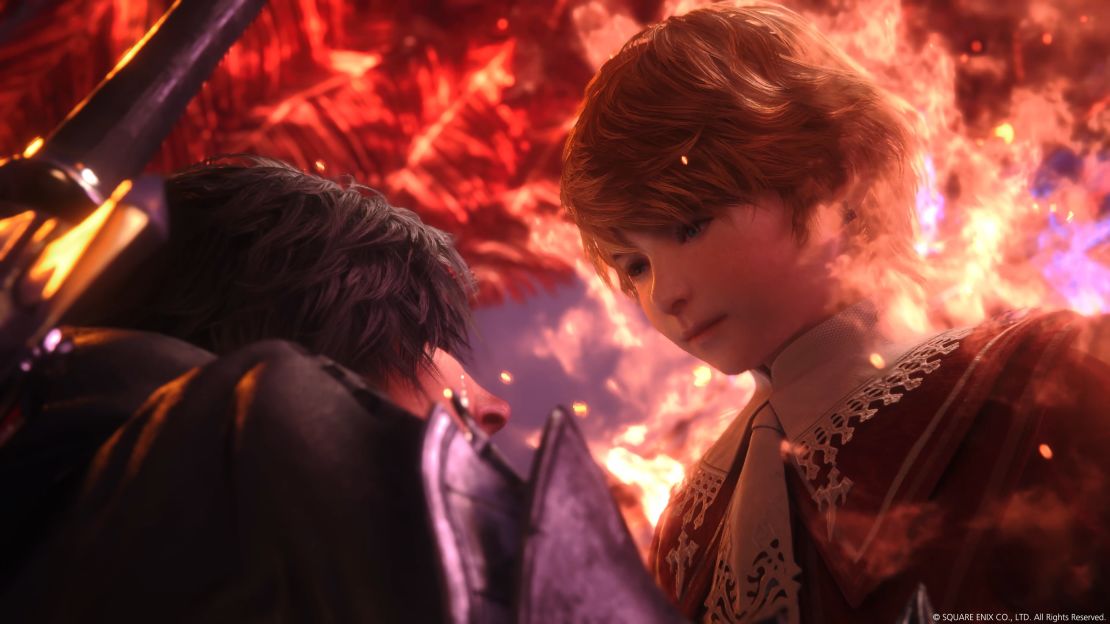
While I won’t get into spoilers for the story, what really makes it interesting are the characters and the dynamic between members of the Rosfield family. Being the firstborn son, Clive was supposed to be the Phoenix’s Dominant, the one who would inherit its power. However, it was Joshua, the younger son, who became the Dominant. Unable to become the Dominant, Clive trains as a soldier and becomes the First Shield of Rosaria in order to protect Joshua. As such, he was blessed by Phoenix and can wield its blazing powers despite not being the Dominant.
This causes a rift between Clive and his mother, the duchess Anabella. Her main concern is her royal bloodline and she has a cold disposition toward Clive because he isn’t the Dominant while being warm and overprotective over Joshua. Her attitude is exemplified during a scene where after a terrible accident, she leaves Clive for dead without any remorse but only changes her mind after remembering that her husband, Elwin, mentioned that Clive is a great soldier. This prompts her to spare Clive’s life.
One new feature I really appreciated is the Active Time Lore. When you hold down the touchpad during a cutscene, it will pause and several icons will pop up on the screen. These icons will have relevant character names, places and lore pertaining to the current cutscene. Clicking on them will open up information about character backgrounds and town histories. It’s a great way to catch up on old information or a proper noun that you may have missed or didn’t understand right away.
For example, the Rosfield family kept talking about taking Joshua to the Phoenix Gate, but I didn’t understand why that place was so important. Pulling up the Active Time Lore menu allowed me to understand that it was a stronghold that was only accessible to Joshua, the Dominant of Fire. That way, he can communicate with the Phoenix and hear its forebears.
Lastly, I got a brief taste of the open-world aspects of Final Fantasy XVI. In a third separate build, Clive was placed in a vast green field filled with ponds and regular aquatic monsters roaming around. The grassland looked great and the serene music in the background did enhance the experience. I was only allowed to roam around a certain area and wasn’t allowed to accept any side quests in my proximity.
I’m curious to see how much of a role the open world plays in the final game, as the set pieces and dungeons I experienced during my time with the demo were very straightforward and on-rails. Additionally, the map to travel from one place to another is an overworld one where you can select a location and simply go there. It’s similar to how Stranger of Paradise: Final Fantasy Origin and Nioh implemented their maps.
The takeaway
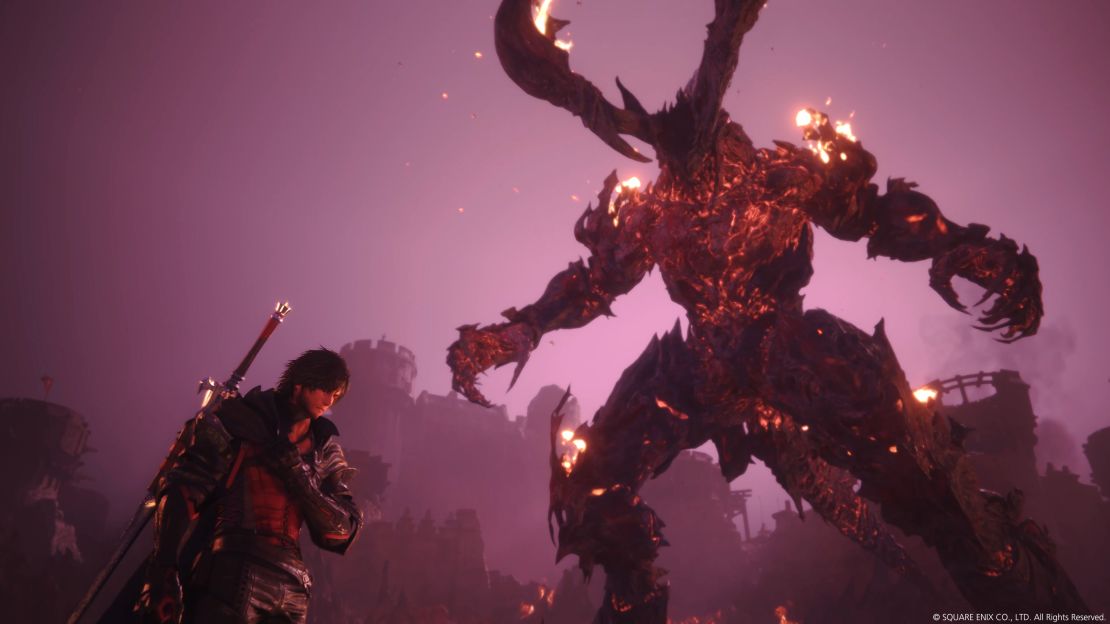
After my six hours with Final Fantasy XVI, I came away excited to see how the different aspects of the combat, story and characters will come together in the final game. Clive’s quest for revenge when he becomes an adult is a legitimately engaging one given his traumatic experiences as a teenager. The story is also presented in a much more coherent manner than its predecessor, Final Fantasy XV, in which bits and pieces of extra story context were scattered between downloadable content and other media, such as movies like Kingsglaive: Final Fantasy XV.
The combat is also fun and approachable even for those who don’t have much experience with action games. Its forgiving mechanics can make the game somewhat easy, but players can adjust their own adventure. Fortunately, Square Enix confirmed that there will be harder difficulty levels when New Game+ is unlocked.
From what I’ve played, it looks like Square Enix had a much clearer vision of what it wanted Final Fantasy XVI to be as opposed to Final Fantasy XV. It’s a straightforward RPG with a compelling story and cast of characters, along with enjoyable gameplay mechanics. I can’t wait to experience the full game — and see if it can land among the best PS5 games — when it releases on June 22 for PlayStation 5.
